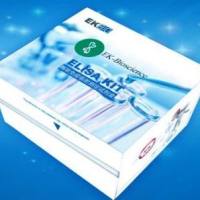Cell targeting agents such as antibodies, antibody fragments (sFvs), or growth factors have been conjugated or genetically fused to a variety of plant and bacterial toxins. These targeted therapeutics, termed “immunotoxins,” have been evaluated for their clinical efficacy in the treatment of cancer, AIDS, and immunological diseases (1 ,2 ). Development of potentially promising clinical results, however, have been hampered by problems of toxicity and immunogenicity owing to the foreign proteins (3 –8 ). Although the development of humanized antibodies has alleviated some of these effects (9 ,10 ), the toxins still remain a problem. In this regard the use of human proteins as components of the immunotoxin are highly desirable (reviewed in ref. 11 ). Human RNases such as EDN, angiogenin and pancreatic RNase A are not toxic to cells yet when linked chemically or fused genetically to cell surfacebinding ligands have potent anti-tumor effects both in vitro and in vivo (12 –23 ). Furthermore in vivo experiments demonstrate that the RNase-based therapeutics cause fewer nonspecific toxic or immunogenic side effects than plant and bacterial toxins (22 ,23 and reviewed in ref. 11 ).






